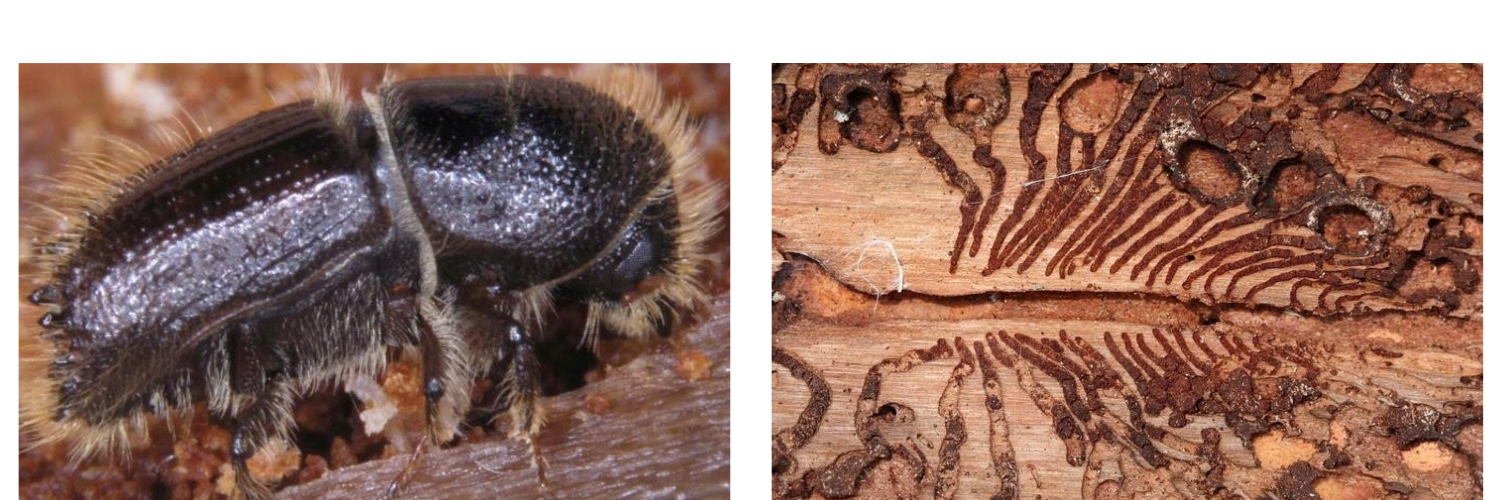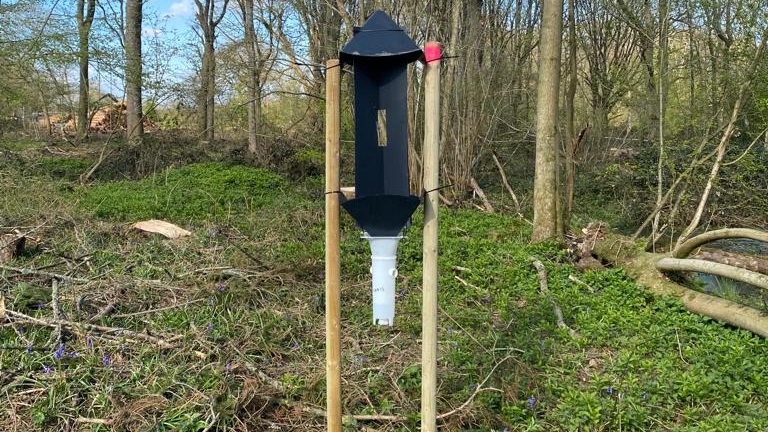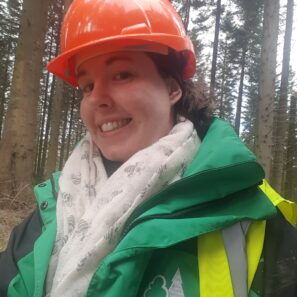Five surprising things about Ips typographus
Anna Platoni is the Advisory Entomologist at Forest Research. She leads the team answering entomology questions submitted via TreeAlert.

Pictured above: (left) Ips typographus. Credit Gyorgy Csoka, Hungary Forest Research Institute, Bugwood.org; (right) Ips ‘gallery’, Credit Milan Zubrik, Forest Research Institute – Slovakia, Bugwood.org
Ips typographus (also known as the Larger eight-toothed European spruce bark beetle) was first found in the UK during 2018 at a site in Kent. Since then, Forest Research has been leading research on the biology of this interesting beetle, and working with Forestry Commission, Defra and APHA to undertake surveillance and eradicate it.
TreeAlert is the online reporting tool for tree pests and diseases, managed by Forest Research with funding from Defra, Forestry Commission, Scottish Forestry and Welsh Government.
Here Anna tells us:
Five surprising things about Ips typographus
Trees are usually very well defended against beetles like Ips typographus. They produce chemical and physical defences to make them harder to attack and digest. As trees age however, or if they are under stress (for example if they are damaged or droughted) then these defences can weaken. This is the ideal time for bark beetles to enter the tree. When attacking dead and dying material, insects like these are part of the natural process of nutrient cycling, returning nutrients locked up in the tree back to soil.
However, where there are lots of dead, stressed or weakened spruce trees, such as after a drought or storm event, then the Ips typographus population can boom. In continental Europe, where Ips typographus is native, outbreaks of the beetle can have devastating effects. Once populations are high, then, by sheer force of numbers, Ips typographus can start to overwhelm the defences of healthy spruce trees rather than just the sick ones. It is at this point, when healthy trees are being killed, that Ips typographus starts to act as a major forestry pest. With the number of extreme weather events likely to increase as an effect of climate change, without careful management, Ips typographus is likely to become of increasing concern as a forestry pest in the UK.
Ips typographus, like other bark beetles, live most of their life under the bark of trees eating the wood just underneath – they feed on the phloem, the tissue which transports nutrients from the leaves to the roots of the tree. Living within their food source gives them both a tasty buffet as well as some protection from predators. The lifecycle starts with the mother beetle eating a long vertical tunnel under the bark up the length of the trunk. She then lays her eggs along its sides. When the larvae hatch from these eggs, they then eat outwards, listening out for the vibrations of their siblings eating so that their tunnels never cross. This results in a symmetrical fan like pattern of damage hidden under the bark, known as a gallery. The pattern made by different species of bark beetles are distinctive and can be used to identify which species are feeding on a tree. Those of Ips typographus are thought to look like they have been engraved into the wood and this is what gives the beetle its scientific name – “typography” is the art of engraving where a design is cut into a piece of wood and then used to print copies.
Hard outer wing cases are an important feature of beetles as they protect their delicate wings and body underneath, allowing them to live in many habitats that other, more delicate insects could not. Living under the bark of trees and eating tunnels through the wood underneath is a great example of this. The wing cases of Ips typographus (and other bark beetles) even have a shovel-shaped indentation on their rear that they can use to push out frass (beetle poo!) and other detritus from their galleries. We tend to use the technical name for this feature which is an “elytral declivity” rather than shovel-bum, though!
For such a tiny beetle, finding a partner when prospective mates are hidden under the bark of trees within large forests could be a tricky business. Male Ips typographus have an ingenious solution to this, producing an air-borne chemical signal that alerts and attracts other breeding adults to a suitable tree that they have found to breed in. As entomologists, we can hijack this system in order to trap the beetles. We do this to check whether the beetles are present at particular sites. We use traps baited with a synthetic version of the chemical smell produced by the male beetles, known as an “aggregation pheromone”. The traps themselves are dark coloured and column shaped so that, to a beetle with poor vision, in profile against the sky, they resemble spruce trees. The beetles are attracted to the trap and fall into the collecting jar at the bottom, ready to be counted by the Forest Research entomologists.
For a beetle that is so small and lives in such a hidden place, plant health officers and scientists from the Forestry Commission and Forest Research are really successful in finding where it is hiding! Outbreak sites of the beetle have even been found by surveying trees via helicopters. Using aerial surveys in this way means that huge areas can be surveyed over a short time. Spruce trees with browning crowns are noted from the air for follow-up inspections from the ground for galleries and beetles to be identified back at the lab.
We also ask for help from professional foresters and members of the public to report trees that they are concerned about via our online reporting service TreeAlert. We can often identify what is wrong with the tree via the pictures submitted, but sometimes we will need to ask a plant health officer to attend to collect a sample. In this way, the public and forest professionals act as a huge network, helping us to spot and identify pests such as Ips typographus to protect our trees.

Pictured above: Beetle trap.Credit Venkatesh Vemulapati
Further information
Ips typographus (eight-toothed bark beetle) were confirmed on spruce trees at woodland sites in the South East of England last year. They were found in Kent, East Sussex, West Sussex and Surrey.
More information can be found on the Forest Research tools and resources pages here.
Plant health requirements introduced last year included an extension to the demarcated area relating to the movement of susceptible material within the demarcated area (DMA).
A visual guide and video explain the movement restrictions of spruce trees and spruce material originating from within the DMA.
For more information and how to apply for authorisation to fell, transport or process spruce trees visit the Applying for Authorisations guide.
Grants are also available through the Tree Health Pilot to support woodland managers with spruce trees affected by, or at risk of, the eight-toothed spruce bark beetle.

Anna Platoni
Anna is a passionate entomologist with 10 years experience in the public and charity sector. After studying Entomology at Imperial College London Anna started her career at the Royal Horticultural Society. There she answered entomology related gardening queries, researched pest insects such as carrot fly and headed-up the biosecurity measures for RHS flower shows. She joined Forest Research team in January.

